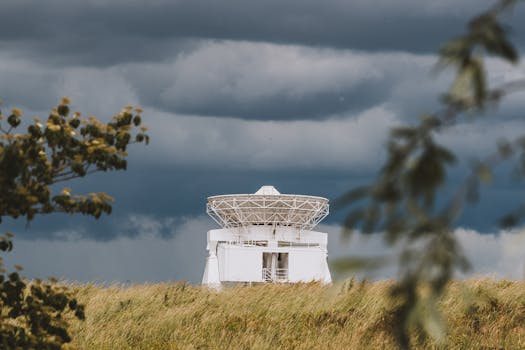GEO Satellites: Unlocking the Power of Geostationary Orbit

GEO Satellites: Unlocking the Power of Geostationary Orbit
GEO satellites, or Geostationary Earth Orbit satellites, are a type of satellite that orbits the Earth at an altitude of approximately 36,000 kilometers. At this altitude, the satellite’s orbital period matches the Earth’s rotational period, allowing it to remain stationary in the sky. This unique characteristic makes GEO satellites ideal for a wide range of applications, including television broadcasting, telecommunications, and weather forecasting.
The concept of GEO satellites was first proposed by science fiction writer Arthur C. Clarke in 1945. However, it wasn’t until the 1960s that the first GEO satellite, Syncom 2, was launched. Since then, hundreds of GEO satellites have been launched, providing a wide range of services to people around the world.
How GEO Satellites Work
GEO satellites work by transmitting and receiving signals to and from Earth. The satellite is equipped with a transponder, which amplifies and re-transmits the signal back to Earth. The signal is then received by a ground station, which decodes and distributes the signal to the intended recipient. GEO satellites use a variety of frequencies, including C-band, Ku-band, and Ka-band, to transmit and receive signals.
One of the key advantages of GEO satellites is their ability to provide a wide range of services to a large area. A single GEO satellite can cover an entire continent, making it an ideal solution for applications such as television broadcasting and telecommunications. Additionally, GEO satellites are relatively low maintenance, as they can be controlled and monitored from a ground station.
Applications of GEO Satellites
GEO satellites have a wide range of applications, including television broadcasting, telecommunications, and weather forecasting. Television broadcasting is one of the most common applications of GEO satellites, with many channels using them to transmit their signals to a wide audience. Telecommunications is another major application, with GEO satellites providing internet and phone services to remote and underserved areas.
Weather forecasting is also a critical application of GEO satellites. By orbiting the Earth at a fixed point, GEO satellites can provide continuous coverage of the weather, allowing meteorologists to track storms and predict weather patterns. This information is then used to issue warnings and alerts to the public, helping to save lives and property.
Future of GEO Satellites
Despite the many advantages of GEO satellites, they are not without their limitations. One of the major limitations is the risk of collision with other satellites or space debris. As the number of satellites in orbit increases, so does the risk of collision, which can have serious consequences for the satellite and the services it provides.
To address this issue, satellite operators are developing new technologies to improve the safety and sustainability of GEO satellites. One such technology is the use of electric propulsion, which allows satellites to maneuver and avoid collisions more efficiently. Additionally, satellite operators are working to develop more efficient and sustainable launch systems, which will reduce the cost and environmental impact of launching satellites into orbit.
In conclusion, GEO satellites are a crucial part of modern telecommunications, providing a wide range of services to people around the world. Their unique characteristics, including their ability to remain stationary in the sky, make them ideal for applications such as television broadcasting, telecommunications, and weather forecasting. As the demand for satellite services continues to grow, it is likely that GEO satellites will play an increasingly important role in the future of telecommunications.




